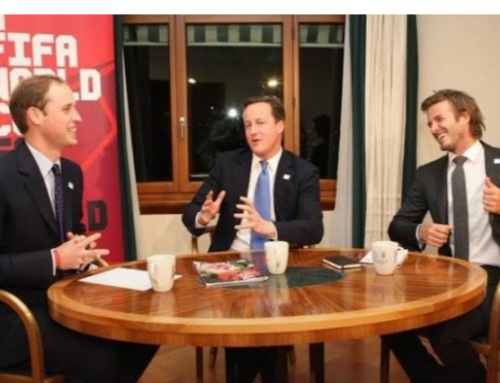Introduction
Last month, a post of mine on Linkedin generated some positive feedback. Women in Sport had published a paper calling for it to be mandatory for all sports boards to have a 50:50 gender ratio. I had shared that report with the observation that the Rugby Football League Board, which I chair, was comprised of 60% women, with the ratio of NED’s being 75% women. I said that I was benefitting from the advice of my colleagues and that gender parity on Boards was possible. Where there is a will there is a way.
I do believe that. Throughout my career in leadership, I have deliberately set out to promote gender equality where I have been able to lead. I have done that not because there are quotas, but it has been good for business and decision making to do so. I have put women on Boards because the business will benefit from doing so. I want to explain in this article why and how we have achieved it and what the benefits are, so that other leaders can hopefully take motivation from what we have been able to achieve.
Where there is a will there is a way
For me, from my first Executive leadership positions, it has been easy and sensible to encourage women into senior positions. In my first executive leadership position as Director of Rights & Business Affairs at ITV, I appointed Helen Hurley as my No.2, as she had the temperament, the skill and the drive to grow in the role to the benefit of our team.
TV is an industry where women excel in leadership but in the early 90’s, that was not necessarily the case. Helen was, as I expected, a great success. But, when the time came for her to start her family, it gave me my first experience of handling a maternity leave. It worked very well for both of us. I recruited Daniel Isaacs to act up as maternity cover for 9 months while Helen was on leave. He went on from there to be a leading executive in the TV industry. Helen came back on a part time basis and it worked well for all of us, with the work easily able to be shared out with other colleagues.
In fact, at the time, I thought it would create an enterprising business opportunity in the recruitment space for a firm to specialise in assisting employers to recruit appropriate skilled staff to provide maternity cover and also to provide staff to work part time if the returning employee was also returning part time. For example, if a colleague wished to come back for 2.5 or 3 days per week, it would be helpful for an employer to be able to recruit somebody would be willing and able to cover the remainder of the week
The RFL Board
I have been on the Board since 2013 but became interim Chair in 2019, by which time, our one female colleague, Claire Morrow, had to drop off as she was timed out. Karen Moorhouse was the Company Secretary and on the Board but all of the NED’s were male.
I vowed that, if I were elected as permanent Chair, I would try and bring in at least one and hopefully two women as NED’s. The reason was that I felt that we needed a different, non-male perspective to some of the challenges that I knew we were to face. I felt that the perspectives from an all male Board were too similar and not sufficiently nuanced or balanced to allow the Board to be high performing. I instructed our Executive Search partners to explore what women were out there who might be willing to join our Board as NED’s, especially if I, a male, was appointed Chair. It was a specific instruction but of course it was conditional on who was appointed Chair. The two recruitment processes ran simultaneously, with the Chair process finishing first so that the Chair could join the recruitment process for the other two NED positions.
In the end, I was successful in my application, and was appointed as Chair. So, I then joined the recruitment process. There was an impressive selection of candidates and we were delighted to appoint Sandy Lindsay and Dr Rimla Akhtar as NED’s.
In 2022, after we reduced the size of the Board and my two colleagues, Chris Brindley and Chris Hurst came to the end of their terms, we again went out to recruit a new NED, this time with a sporting performance background. I fully expected a male candidate to be successful at the start of the process but we advertised openly and I was very pleasantly surprised to find that over 60% of the candidates shortlisted were women. At the end of that process, Cherrie Daley was the standout candidate and joined the Board. That gave us again 3 NED’s out of 4 who were women. And the perspective that Cherrie has brought has transformed the Board’s ability to deal with performance and sports development issues.
Earlier this year, when Rimla Akhtar stood down, we again ran a search process, but this time it was run internally. I have to admit that, at the start of this process, my intention was to appoint a man to create a 50/50 gender split on the Board. The main skill we were looking for was financial literacy as this colleague would become the Chair of the Audit & Risk committee. We had over 75 applicants and could have shortlisted as many as 30. In the end, we shortlisted 8 for an initial interview. In this process, women applicants were in the minority. But we included two women in the 8 on the initial short list.
At the end of a comprehensive and detailed selection process, we were delighted to appoint Julia Newton as the outstanding candidate. And I was pleased to maintain our ratio of 75% of NED’s as women. These were all open, transparent, and multi-stakeholder conducted recruitment processes. Of course, we needed women to apply in the first place in order to be able to appoint them but it is a sign that the market is beginning to have confidence in the objectivity and fairness of the sporting recruitment processes that so many women are putting themselves forward. I would be concerned if they were not.
SIS
SIS is a privately owned company, a multi-channel provider of 24/7 betting services to bookmaking businesses worldwide. I became Chair in 2021, and the former Chair also stepped off the Board. That left us with no Independent NED’s other than the Chair. Constitutionally, we needed one other Independent NED so we asked Andy Taylor of CAA Search to find us one. We indicated that, if there were sufficient suitable candidates, we would potentially be able to get Board support to appoint two new NED’s.
Once again, I told our search partner that I would be keen to find a woman to be an NED and that they should keep this at the front of their process. The Board was all male and, as with the RFL earlier, I felt that this made our potential for decision making too uniform, even if the Board was comprised of a Director from each of our major shareholders. I felt that it would be helpful if some varied potential thinking could come from the appointment of the right Independent NED to the Board.
In the end, Andy found us two suitably experienced and skilled NED’s who emerged from interview, both of whom were based overseas and both were women, with fascinating and varied backgrounds that we felt certain could add value to the Board’s decision making.
We were delighted to appoint Giovanna D’Esposito and Laila Mintas to the SIS Board and they have proved to be valuable additions.
Succession Planning
When I was CEO of the JLC, after about 4 years in the role, I began to think about succession planning for the day when I might leave or if the JLC ever wanted to move on from me. I had brought in or promoted a number of people to our Senior Management team and began to explore with them how we might be able to help them to develop their skills and experience if they aspired to step up to be CEO.
Two people that I had in mind and rather hoped might be willing to step up were Michelle Janes, the Head of our Leadership Division, and Claudia Mendoza, our Director of Policy and Public Affairs. They each had many skills, whilst each also needing to broaden their skill set in differing areas to be a compelling candidate for CEO. The question was whether they were at the stage in their lives and careers where they wanted to step up and assume the responsibilities for being CEO of a high profile and visible charity.
They each indicated that they did wish to move forward with their careers and be considered to be capable of being CEO, so we worked to respond to their request for training and development. And I was delighted when, after I announced that I was stepping down, the JLC Trustees appointed them as Joint CEO’s to succeed me.
Conclusion
In all these decisions, a conscious decision had to be taken to recruit women to the Boards or to senior decisions. But, even when this was not necessarily the object, running a fair, open, transparent and public process helps to attract the right candidates. And women also need to feel confident that their applications will be fairly treated and apply in the first place.
As I said at the beginning, gender equality on boards is achievable. Where there is a will, their is a way.




